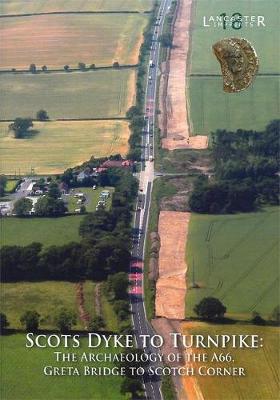The A66 has been a routeway of significance for at least 2000 years, linking the east and west of the country by the Stainmore Pass. Archaeological excavation ahead of the upgrading of the A66 to dual carriageway, between Greta Bridge and Scotch Corner, provided an important opportunity to investigate the development of the landscape. The archaeological remains discovered range in date from early prehistory to the nineteenth century, and particularly from the Iron Age and early Roman period (c 800 BC - AD 100).
One of the most significant results was the important new dating evidence for a section of the Scots Dyke, a substantial linear earthwork between the Rivers Tees and Swale. It has been dated to the early-middle Iron Age, which places it within the wider Iron Age and Roman landscape revealed by the road improvement scheme. This may indicate that it was related in some way to the Iron Age tribal centre at nearby Stanwick.
The volume arises from a multi-disciplinary approach to the archaeology, with the emphasis placed on interpreting the sites within their wider landscape context. It involved a multiplicity of authors, ranging from staff at Oxford Archaeology North, to external specialists, including staff at Lancaster University and University College, London.
- ISBN10 1907686061
- ISBN13 9781907686061
- Publish Date 1 July 2014
- Publish Status Active
- Out of Print 30 June 2021
- Publish Country GB
- Imprint Oxford Archaeology North
- Format Hardcover
- Pages 235
- Language English
